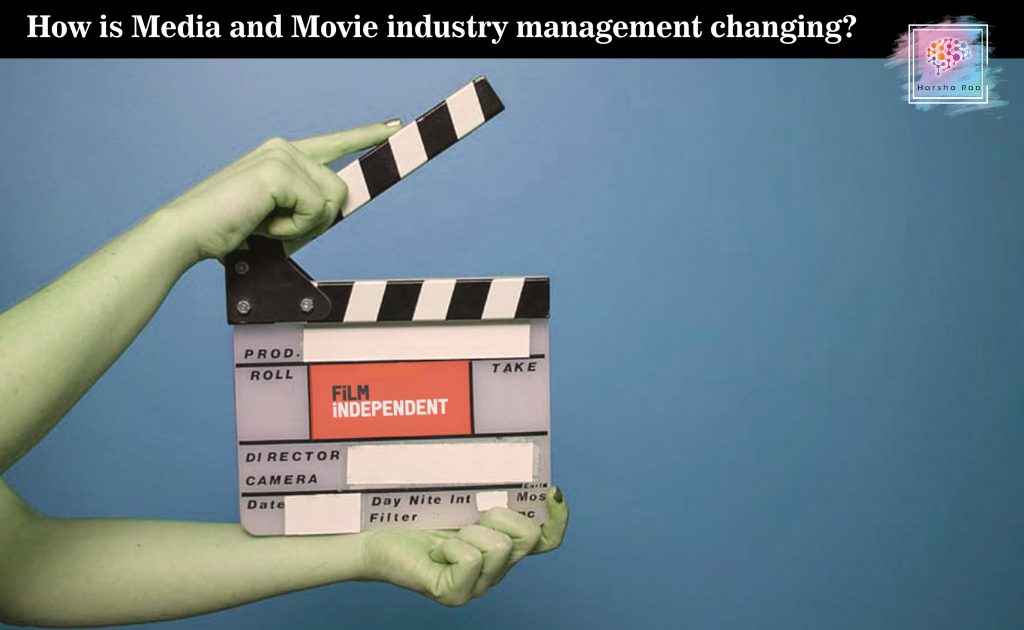How is Media and Movie industry management changing?
4 min read
In recent years everything has changed, whether it’s your work lifestyle or your entertainment lifestyle, everything has changed. With movie theatres closing and social distancing becoming popular, time spent watching movies at home has increased, and OTT platforms have experienced an increase in acceptance of their goods and services. People are heading towards OTT platforms more than the big movie industries. OTT multimedia distribution has exploded in popularity during recent years. Instead of using a cable or DTH satellite connection, OTT allows users to watch their favorite shows, films, or sports through the internet. The world has radically changed how we enjoy and what we enjoy due to the arrival of this OTT platform. More than half a trillion dollars are at stake as a result of the digital revolution.

According to a survey by Research and Markets.com, The Over-the-Top (OTT) Market was worth USD 85.16 billion in 2019 and is predicted to grow to USD 194.20 billion by 2025, with a CAGR of 13.87 % from 2019 to 2025.
The internet and OTT video services are rapidly transforming television and filmed entertainment, mainly broadcast and cable television. A total of $570 billion in annual market price is at stake in content development, aggregation, and dissemination. OTT television is at the core of this transformation, with around $25 billion in annual revenues produced largely by a dozen of major US-based global giants like Google’s YouTube, Amazon, as well as Netflix. Its effect on traditional networks (broadcast and pay-TV), as well as multimedia providers (cable, telecom, and satellite), has been thoroughly researched. Nonetheless, little research has been done on the effect of OTT and the shifting TV landscape on different domestic manufacturing ecosystems around the globe.
As technologies improve or new ones emerge, the term “OTT” has since evolved to refer to streaming media services that offer videos and other digital content to any devices including TVs that are or capable of being connected to the Internet, thus bypassing the satellite television platforms, broadcast, and traditional cable. Here are some benefits of the OTT (On-the-top) platform:
- OTT allows you to access media services at any time and from any location. Thanks to VOD solutions, one could watch their favorite shows from anywhere. It also connects to digital devices such as Android TV and a variety of other gadgets, allowing users to enjoy their media on those as well.
- In comparison with traditional TV connections, OTT platforms are less expensive. The same entertainment that you can watch on TV cable by paying a premium price is available on OTT for just a fraction of the cost.
- OTT platforms are simple to operate. To use an OTT platform, you only need a few items. It requires supportive internet access as well as a device such as a smartphone or a computer.
- Media is also delivered to users based on their connection speeds, ensuring that the media doesn’t really delay and also that the viewer could experience seamless video content.

The market is being driven by the continuous commercialization of sporting and entertainment facilities, as well as increased competitiveness amongst OTT distributors. According to Deltatre’s 2019 edition of ‘The Future of Sports Entertainment,’ sports programming providers throughout the world are investing roughly 15% of their overall general fund to build the OTT technology platform, which is expected to be valued over USD 6.8 billion by 2021 in the United States. More and more companies are interested in investing in the sports-related technology platform, with over two-thirds of customers preferring to pay nearly us$39 monthly for sports programming.
According to Cisco, after M2M connectivity as well as smartphones, networked TVs will increase at the third quickest rate (at a little less than a 6% CAGR) reaching 3.2 billion by 2023. Approximately 33% of consumers are using a Smart TV featuring video-enabled applications to stream internet videos, contrasted to 23% who are using a video game console. In India, the top five metro cities contribute 55 % of all OTT video platform subscribers, with Tier one cities accounting for another 36%.
Technologies will advance as our lifestyles alter. As a result, it is quite evident that OTT, with its unique combination of affordability and accessibility, is here to stay. It is undeniably a game-changer in terms of how entertainment content is distributed and consumed. OTT marketing and media tend to alter the industry in the coming years as customers transition to internet streaming. In India and across the world, OTT marketing seems to have a great future. People’s streaming entertainment interactions are about to get a lot better, thanks to the fantastic original content that OTT providers have had to provide, as well as the convenient watching alternatives as well as cost-effective membership mode contrasted to cable.
As a result of these expanding trends, more TV advertisers are turning to OTT marketing to show their ads and gain optimum rewards. As we progress toward a prosperous society, OTT advertising will take a considerably larger percentage of the market than it is now.






